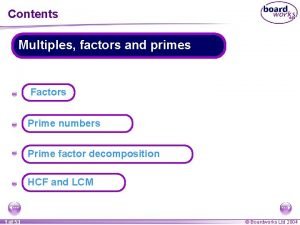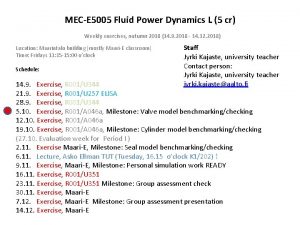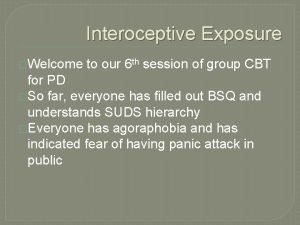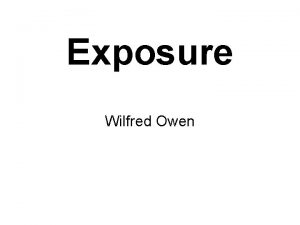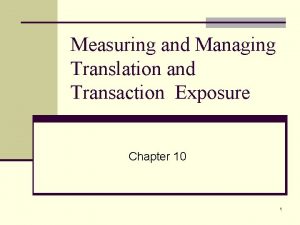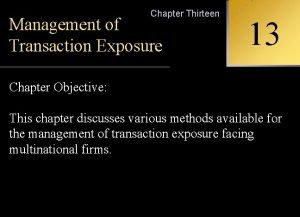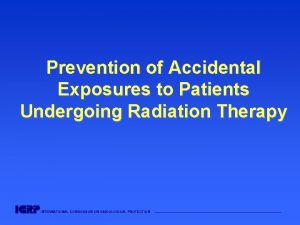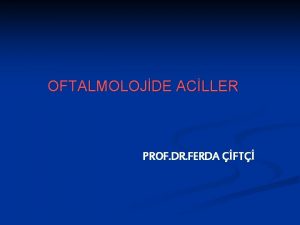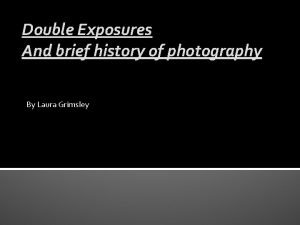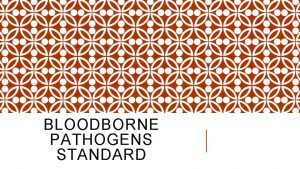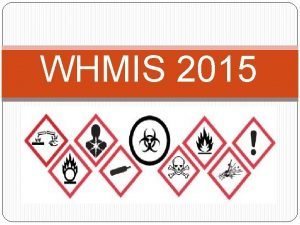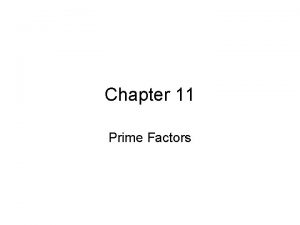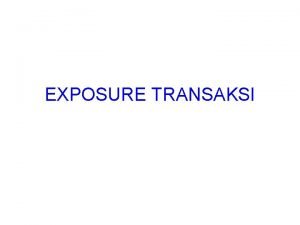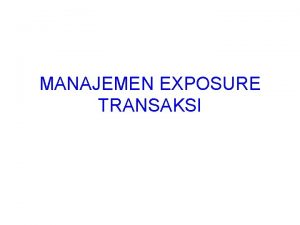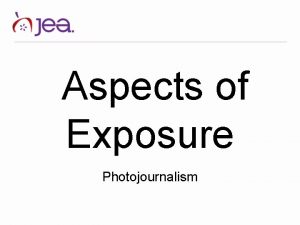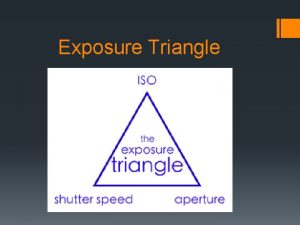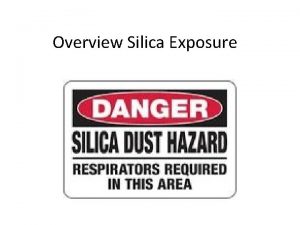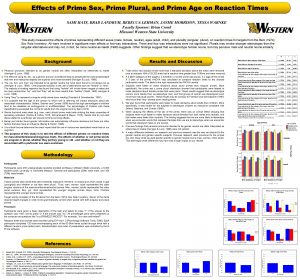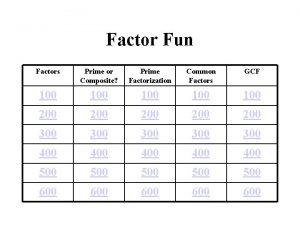Exposure Factors or Prime Factors 1 PRIME FACTORS

















































- Slides: 49

Exposure Factors or Prime Factors 1

PRIME FACTORS What is “technique” ? How does it affect the “image” 2

Exposure Factors – 3 or 4 n The four prime exposure factors are: Voltage = k. Vp* Current = m. A* Exposure time = seconds or fractions of a sec* n Source-to-image distance = SID n n n 3

PRIME FACTORS • KVP • MAS • DISTANCE 4

k. Vp n Kilovolts controls how fast the electrons are sent across the tube n Controls, quality, penetrability & contrast n Increasing k. Vp also increases scattered photons reducing image quality Does k. Vp influence OD? n 5

“SHORT” VS “LONG” SCALE 6

k. Vp • Low k. Vp (50 – 60) • Short scale • High contrast • “Bone work” 7

k. Vp • High k. Vp (90 – 120) • Long scale • Low contrast • “Chest images” 8

9

10

11

12

m. A n n n Determines the number of photons, radiation quantity, OD & patient dose Changing m. A does not change the kinetic energy of e. Available m. A stations are usually 50, 100, 200, 300, 400 & 600 13

14

Exposure Time n Should be kept as short as possible, for most examinations. To minimize the risk of patient motion n m. A X s = m. As n m. As controls OD n m. As determines the number of photons in the primary beam 15

Distance n Affects exposure of the IR because of the Inverse Square Law n SID largely determines the intensity of photons at the IR n Distance has no effect on radiation quality 16

INTENSITY IS SPREAD OUT… 17

Inverse Square Law Formula Intensity #1 Intensity #2 Distance #2 Squared Distance #1 Squared 18

SID Changes 19

Direct Square Law • New m. As = New distance 2 Old m. As Old distance 2 20

Focal-Spot Changes 21

Producing optimal radiographs … key for diagnosing disease 22

How much of the radiation received by the patient Actually reaches the IR ? 23

About 1% 24

25

Creating the IMAGE • When x-rays pass through a patient's body, three things can happen: • (1) the x-ray photon is transmitted, passing through the body, interacting with the film, and producing a dark area on the film; • (2) the x-ray photon is absorbed in an area of greater tissue density, producing lighter areas on the film; and • (3) the x-ray photon is scattered and reaches the film causing an overall gray fog. 26

IMAGES • DENSITY = THE AMOUNT OF BLACKENING “DARKNESS” ON THE RADIOGRAPH • CONTRAST – THE DIFFERENCES BETWEEN THE BLACKS TO THE WHITES 27

m. As Changes • at least 20 - 30 % mas change needed to see a visible change in density 28

m. As DOUBLED = DENSITY DOUBLED 29

+ 25% + 50 % mas 30

m. As Changes 31

Tube voltage (k. Vp) • Determines the maximum energy in the beam • spectrum and affects the quality of the output spectrum • Efficiency of x-ray production is directly related to tube voltage 32

Influencing factors: k. Vp 15% rule: á 15% k. Vp = doubling of exposure to the film 15% k. Vp = halving of exposure to the film 15% rule will always change the contrast of the image because k. V is the primary method of changing image contrast. Remember : 15% change ( ) KVP has the same effect as doubling or ½ the MAS on density 33

k. Vp Changes • The k. Vp setting must be changed by at least 4% to produce visual changes an image 34

k. Vp Changes 35

+ 15% kvp - 15% kvp 36

k. Vp Changes 37

4% k. Vp Changes 38

Determining Radiographic Technique The Patient Factor n The most difficult task for technologists… evaluating your patient n The patient size, shape, and physical condition greatly influences the technique selection 39

4 general states of body habitus 40

Radiographic Technique n Technique charts are based on the “average patient” n The thicker the part the more x-radiation is required to penetrate. Calipers should be used n Keep in mind not only the measurement but the type of tissue you need to penetrate (fat vs muscle) 41

Technique n In general, Soft tissue = low k. Vp and high m. As n Extremity (soft tissue & bone) = low k. Vp n Chest (high subject contrast) = high k. Vp Abdomen (low subject contrast) = middle k. Vp n 42

Low Subject Contrast 43

OD = amount of black on image 44

Film Screen • Overexposed • Referring to a radiograph that is too dark because too much x-radiation reached the image receptor • Underexposed • Referring to a radiograph that is too light because too little x-radiation reached the image receptor 45

Technique - Pathology n Pathology can severely affect the technologist technique selection n Always question your patients about health status n If prior images are available…check them! 46

Pathology n Can appear with increased radiolucency or radiopacity n Some pathology is destructive causing tissue to be radiolucent n Others can be additive causing tissue to be radiopaque 47

OD vs tissue attenuation 48

Technique selection – Fixed k. Vp n For each anatomic part there is an optimum k. Vp n m. As is varied based on part thickness or pathological condition 49
 Managing economic exposure and translation exposure
Managing economic exposure and translation exposure Managing economic exposure and translation exposure
Managing economic exposure and translation exposure Translation exposure
Translation exposure Economic exposure refers to
Economic exposure refers to Jeff bezos prime video prime
Jeff bezos prime video prime What is the greatest common factor of 12 and 42
What is the greatest common factor of 12 and 42 What does axaxaxa mean
What does axaxaxa mean Gcf of 24 and 36
Gcf of 24 and 36 Lcm questions
Lcm questions Number 53
Number 53 Prime factorization 120
Prime factorization 120 Factor tree of 78
Factor tree of 78 Factors of 24
Factors of 24 Hcf of 3 digit numbers worksheet
Hcf of 3 digit numbers worksheet Prime factorization of 45
Prime factorization of 45 Factor tree of 420
Factor tree of 420 Mirros
Mirros How to find the prime factorization
How to find the prime factorization Bimdas calculator
Bimdas calculator Prime factors of 36
Prime factors of 36 All factors of 88
All factors of 88 All factors of 60
All factors of 60 Interoceptive exposure
Interoceptive exposure Personification in exposure
Personification in exposure Translation
Translation Define translation exposure
Define translation exposure Measuring exposure to exchange rate fluctuations
Measuring exposure to exchange rate fluctuations Navigator photoshop
Navigator photoshop What is the objective of managing operating exposure?
What is the objective of managing operating exposure? Measuring economic exposure
Measuring economic exposure Eksposur risiko
Eksposur risiko Mere exposure effect example
Mere exposure effect example Stacy shaw welch
Stacy shaw welch Rupture exposure radius
Rupture exposure radius What is limerence
What is limerence Data exposure via rest api
Data exposure via rest api Exposure netting
Exposure netting Management of transaction exposure
Management of transaction exposure Accidental exposure
Accidental exposure Dr gzn gz
Dr gzn gz History of double exposure photography
History of double exposure photography Examples of altruism
Examples of altruism Methods of translation exposure
Methods of translation exposure Garcia effect
Garcia effect Exposure control plan bloodborne pathogens
Exposure control plan bloodborne pathogens Materi gawat darurat
Materi gawat darurat Whmis with ghs stands for
Whmis with ghs stands for The mere exposure effect
The mere exposure effect 17:8 providing first aid for cold exposure
17:8 providing first aid for cold exposure Measuring and managing operating exposure
Measuring and managing operating exposure









